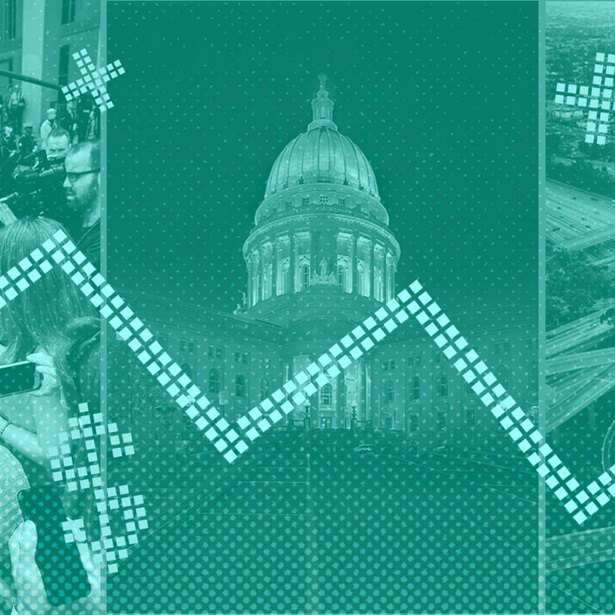States Brace for Another Potential Shutdown
Congress must agree on a budget by Nov. 17; state policymakers prepare for different outcomes

While September’s threatened shutdown of the federal government was averted at the final moment by a six-week stopgap funding bill, a new deadline looms: The House and Senate must agree on 12 appropriations measures or pass another continuing resolution by Nov.17, or the U.S. will again face a government closure.
Such shutdown threats have become increasingly common in recent decades, and while state policymakers may know a lot more about what to expect in a shutdown today than their counterparts did in the 1980s, they still find it challenging to navigate the related fiscal uncertainties. With each shutdown threat, state policymakers must assess the potential impact and prepare appropriate responses that may delay policy discussions and other important work.
With that in mind, state decision-makers are prepping for the Nov. 17 deadline, and as they do, they are likely considering two key points: their reliance on federal discretionary funding for certain assistance programs and how their state’s economic ecosystem may—or may not—be directly affected by a federal government work stoppage.
Programs administered by states
One of the most immediate concerns state policymakers have is that a shutdown cuts off funding for important nutrition and welfare programs, such as the Special Supplemental Nutrition Program for Women, Infants, and Children (WIC); Temporary Assistance for Needy Families (TANF); and Supplemental Nutrition Assistance Program (SNAP). Secretary of Agriculture Tom Vilsack has previously said that his agency does not have enough in contingency funding to keep WIC benefits open, but SNAP benefits could remain open for up to a month into a government closure. During the last shutdown—the only one to last more than a month—Congress passed a separate funding bill to extend SNAP benefits by 30 days, and WIC was kept open with reserve funds.
For their part, policymakers have used state funds to keep certain programs and services running under the assumption that these coffers would be reimbursed when federal funding resumes (after the federal government passes a budget). What sets the current situation apart from previous shutdowns is that states now have ample cushion to do so thanks to record-high rainy day fund balances that were fueled in part by higher-than-expected revenues in 2021 and 2022.
For example, Oregon Public Broadcasting reports that the state has enough funding to cover a month of WIC funding and at least a month of Head Start.
However, state policy website Pluribus News notes that there’s no guarantee the federal government will fully reimburse states or repay funds in a timely fashion. For example, Utah lawmakers spent $1 million to keep the state’s national parks open during the 2013 shutdown, and these funds were never reimbursed. “Congress was supposed to do that, and never did,” Utah’s Gov. Spencer Cox told the news outlet.
The broader economic impact
A prolonged shutdown could have an economic impact on certain regions. For example, states that rely on national park tourism will likely weigh the costs and benefits of keeping certain parks open on their own dime. This shutdown checklist from the Government Finance Officers Association points out that areas with a higher concentration of military personnel, civilian employees working in defense-related industries, and/or federal workers could face financial uncertainty due to potential delays in paychecks. Federal worker furloughs can also “impact the employees and local businesses relying on their patronage,” the association adds.
The shutdown’s economic impact is potentially most acute in the Washington, D.C., region, where The Washington Post notes that federal employees make up nearly 9% of the total workforce. In a sign that federal shutdown threats have become all too common, The Baltimore Sun has reported that Maryland lawmakers recently established a new loan program to help workers impacted by a federal work stoppage. Unlike furloughed workers, federal employees who have to report to work without pay are not eligible to receive unemployment benefits. So, Maryland’s program would offer small, no-interest loans to essential federal employees working in Maryland through a shutdown.
Del. Jessica Feldmark, a Maryland Democrat from Howard County, helped come up with the idea during the last federal government shutdown and called the program “a fundamental issue of fairness.”
Governments may also respond to a prolonged shutdown with other kinds of temporary relief for affected businesses and workers. For example, the last time the federal government shut down, New York state delayed income tax and public college tuition payments for affected individuals.
Final thoughts
Time is of the essence. A shutdown of a few days or even a week would be disruptive for thousands of individuals, though not necessarily for broader state economies. But a long shutdown could have serious economic consequences. The shutdown between December 2018 and January 2019 continued for 35 days—the longest in history—and reduced national economic output by a total of $11 billion, according to the Congressional Budget Office. That figure includes $3 billion that was never recovered.
Justin Theal is an officer with The Pew Charitable Trusts’ state fiscal policy project and Liz Farmer is a public finance journalist consulting with the team.


Budget Threads
Pew’s read on the latest state fiscal news


Where States Get Their Money, FY 2021


Pandemic Aid Lifts Federal Share of State Budgets to New Highs


Uncertainty for State Revenue as Federal Showdown Looms









